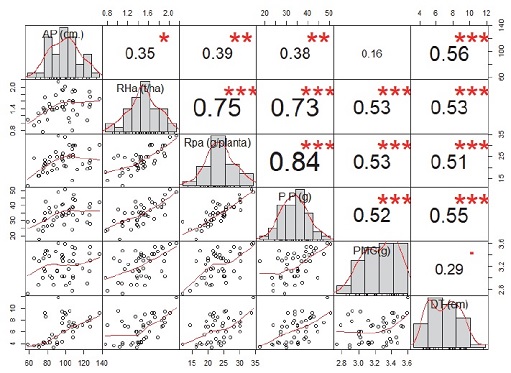Efecto de la eficacia de los microorganismos nativos y la composta en tres pisos altitudinales en el cultivo de quinua (Chenopodium quinoa) variedad INIA 415-Pasankalla
DOI:
https://doi.org/10.28940/terra.v41i0.1622Palabras clave:
altitud, compost, rendimiento, insumo orgánico, insumo microbianoResumen
Los abonos orgánicos son una alternativa sostenible con el agroecosistema frente a los fertilizantes convencionales causantes de la contaminación de los recursos naturales. El objetivo fue determinar la eficacia de los microorganismos eficientes nativos (MEN) y de compost sobre el rendimiento y rentabilidad en el cultivo de quinua variedad INIA 415-Pasankalla en tres pisos altitudinales (Faical 1935 m de altitud, Lagunas Amarillas 2328 m de altitud. y Cascapampa 2995 m de altitud). Se evaluaron cinco tratamientos: T0 (testigo), T1 (MEN 2.5%), T2 (MEN 5.0%), T3 (MEN 2.5%+0.9 kg compost m-1) y T4 (MEN 5.0%+1.8 kg compost m-1), evaluando: AP (altura de planta), RHa (rendimiento hectárea-1), RPa (rendimiento planta-1), PP (peso de panoja), PMG (peso de mil granos) y DT (diámetro de tallo). Además, se analizó el beneficio/costo por tratamiento. Se realizó un análisis de componentes principales ACP, una comparación triple de ANOVA y un análisis de correlación. Con el ACP se obtuvo dos componentes (C1 y C2) explicando el 97.20% de la variabilidad del estudio. El Componente 1 (78.46%) explica la mayor variabilidad y agrupó variables: G-I (AP, DT), G-II (RHa, Rpa, PP). Los tratamientos T4 y T3 presentaron los mejores resultados en relación a la altitud: Lagunas Amarillas-T4 con G-I y Cascapampa-T4 con G-II presentaron los mayores valores del estudio. No obstante, Cascapampa-T2 fue el más rentable (b/c= 5.68). La mezcla combinada de los insumos orgánicos elaborados a partir de materias primas locales y aplicados en forma foliar y suelos presentes en T4, mejoró los rendimientos y la rentabilidad del cultivo de quinua en relación a la altitud.
Descargas
Publication Facts
Reviewer profiles N/D
Author statements
- Academic society
- Terra Latinoamericana

















